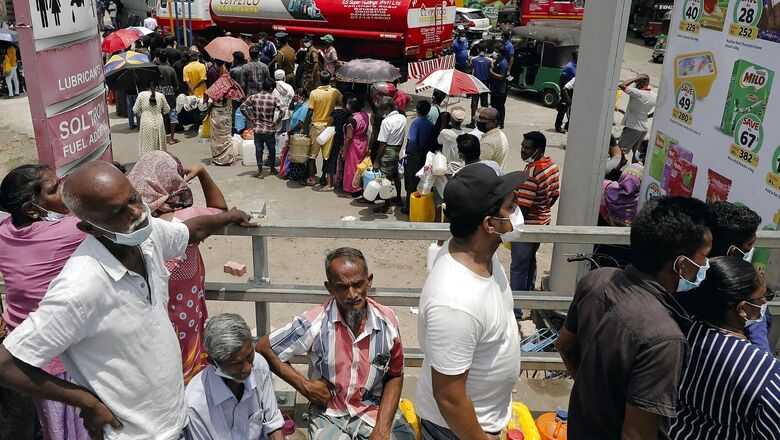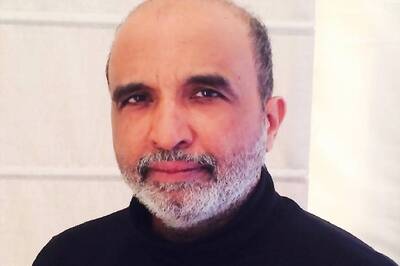
views
Despite social media predictions in his country, the current economic crisis may not have enough heft in it to trip Sri Lankan President Gotabaya Rajapaksa. If he had contributed to the inherited mess — a part of it from brother Mahinda Rajapaksa who was in power for 10 long years (2005-15) and also from the family’s political adversaries when at the helm — the chances are he may have already come around to fight his political-electoral battles another day.
That is when, and only when, the next presidential polls are held in 2024. However, the much-delayed provincial council and local government polls could be a referendum of sorts, as and when held. And, the party in power is going to choose what it considers is a favourable time, as its predecessors had done in their time but could not find any until they lost the nationwide local government polls of February 2018.
Worse May Have Been Over
Compared to the past months, the worse may have been over for the economy – hence for Team Gota, which includes Mahinda, former president and now prime minister of Sri Lanka. That owes as yet not to the better management of the economy, but to the grants and assistance flowing from immediate neighbour India, and distant ally China. Then, there is the IMF funding possibly in the pipeline, the government having accepted the inevitability of knocking on that door, giving up on the family party’s ideological moorings that are against western market economy.
There are reasons to support the Rajapaksa belief that it was the market economy introduced by late President J.R. Jayewardene, a political rival, in the late seventies that is to blame for the current mess. For Gotabaya, it is a part-legacy issue. It’s part-legacy because he too added his share, by slashing taxes and duties, with the 2020 parliamentary polls in mind. The Rajapaksas’ Sri Lanka Podujana Peramuna (SLPP) won, but the nation lost.
As it turned out, the wholly unanticipated global pandemic curbs caused a huge revenue loss, both in terms of tax collections and much more in terms of forex. The latter took the shape of a sudden stoppage of tourism, a major source of forex earnings. Earlier, it was a slide caused by the 2019 Easter blasts, in which scores of foreigners too were killed. Likewise, there was near-stoppage of inward remittances from Sri Lankans employed overseas, which was another major source of much-needed dollar-remittances. Export earnings from tea and garments too stopped, overnight.
Leading Through Difficulties
For starters, the IMF Report of the Executive Board, 2021 has praised the government for leading the nation through the difficult COVID times by announcing economic boosters, both to the individual and the industry alike. The report also specified the continuing pitfalls in terms of debt-GDP ratio, which stood at an unimaginable 116 per cent. This and other vital economic statistics from the IMF have confirmed what was already known, and which the government did not try to hide any more – that the economy is not in the pink of health and is not going to recover anytime soon.
ALSO READ| Colombo Port City: A Chinese White Elephant as Sri Lanka Desperately Seeks India’s Help to Tide Over Economic Crisis
Sure enough, the Rajapaksas would tom-tom the positives in the IMF report across urban Sri Lanka, but then they too have to be apprehensive about the kind of conditionalities the IMF is known to impose for funding Third World nations. In the past, it had taken the shape of sharp cuts in welfare budget of nations alongside a free-for-all open market for foreign investors and also traders – the last one hitting the local dairy industry hard in the seventies, from which the nation’s agrarian economy is yet to recover.
How BRI Failed Sri Lanka
The good news for the Rajapaksas is that their predecessor government, run by the rival United National Party (UNP) under Ranil Wickremesinghe, had decided to knock on the IMF’s door before the presidential polls in 2019 brought Gota to power. They can point to this fact to argue that they (alone) are not at fault, if and when they get back their docile listeners. The bad news is that a part of the need for IMF kind of external funding, though not all, is a result of the profligacy of the war-time regime of then president Mahinda Rajapaksa. Weapons procurement was touted as a threat to the economy at the time, but that was not the only threat.
What conservative free-market economists would argue as unthinking profligacy was justified on the premise that the government had to carry the people along with it in war-time, which previous governments had failed to do. Some villages in the Sinhala South saw roads and electricity for the first time during the conclusive ‘Eelam War IV’ era, thus highlighting the one-sided developmental approach of the rival UNP, which left the rural poor, poorer.
The Rajapaksas achieved this through Chinese BRI (Belt and Road Initiative) investments for physical infrastructure, which should have waited. The non-provision for debt-repayment was compounded by the failure of the Chinese credit model to make local suppliers a stakeholder. It also denied jobs and family income, through the last nearly 15 years, though high infra-spending in times of economic contraction is linked to precisely these two factors. It should have been even more so since Sri Lanka is not a manufacturing economy by any stretch of imagination.
The BRI infra scheme also contrasted with the previous SLPP-Rajapaksa policy of hiring in excess and the rival UNP’s attitude of firing even more from the long list of government and public sector employees. The expectations now are that Indian investments, among other things, would bring back jobs and incomes. First, there is the government sector refurbishment of the Trincomalee oil-tank farms of Second World War vintage and the NTPC’s solar power project at Sampur; both in the joint sector, and in Sri Lanka’s Eastern Province with a mixed ethnicity. Then there are private Indian investments like the Adani Group’s in port and renewable energy sectors.
ALSO READ | As China Fishes in Lankan Waters, India Must Assess Cost and Benefit of Bailing out Neighbour
Shaky Yet Steady
The way the Opposition SJB (Samagi Jana Balawegaya) and the Left-leaning JVP (Janatha Vimukthi Peramuna) could muster street power in separate demonstrations in capital Colombo from across the country, it would vouchsafe for the lack of popularity of the government leadership. Their complaint was that had it not been for the fuel shortage, they could have transported more people to the protests. Both wanted Gotabaya out, but neither spelt out the future course if that were to happen — who would be their leader, and how they intended to achieve this.
From within the government coalition, at least two sacked alliance ministers, Udaya Gammanpila and Wimal Weerawansa along with a third one, Vasudeva Nanayakkara, still hanging on to the office for his ideological reasons, have been talking in more concise terms, workable or otherwise. It is about ensuring loss of parliamentary majority for the government, thus forcing a new prime minister in place of their one-time mentor and guardian angel Mahinda Rajapaksa. Yet, the mainline SJB Opposition has declared they would not do business with the trio.
Conversely, there are street expectations from the ruling Rajapaksas to effect similar defections from the other side to ensure continued parliamentary majority, given they are past-masters in the game. Their main target would be the 14-member Sri Lanka Freedom Party (SLFP) parent group under former president Maithripala Sirisena. But they would not miss targeting the SJB directly, having already manged the cross-over of some ethnic Muslim MPs from the SJB’s allies without formally defecting from parent parties.
What the Constitution Says
The Constitution provides for the replacement of the president due to natural causes, resignation or impeachment, requiring two-thirds vote — which looks far-fetched. Even then, the prime minister would be the ‘acting president’ until Parliament elects a replacement for the remainder of the term. It happened after the LTTE’s assassination of President Ranasinghe Premadasa, father of the current Opposition Leader, Sajith P., in 1993. All of it looks far-fetched, though government members do not rule out an orchestrated ‘Orange Revolution’-kind of situation – which the establishment is determined to root out even before it sprouts.
For now, the worse seems to have been over for the Sri Lankan economy and also the man on the street. It may only be a pain-balm, and not a permanent cure, yet even that balm or cushion was not available until now. It is not that all the problems have ended. The commodity and fuel and pharma supplies coming from India, and cash flows from China and earlier Bangladesh, coupled with IMF funding and hoped-for debt-rescheduling, would all make tomorrow better than yesterday, even if marginally.
That could well become the Sri Lankan ‘new normal’, where ship-to-mouth existence would have to continue for an indeterminable length of time. Should it remain so, the Rajapaksas would have to convince the voters that their tomorrows are going to be bright, if not brighter, against the Opposition’s name-calling and nothing more. Then again, political stability could become an election issue in 2024, as it was in 2019 – though for different reasons this time. The Opposition would have to come up with a convincing alternate economic matrix, as promised, if the voter has to trust them more, not stopping with the SJB’s current efforts at polarising an angered nation’s pent-up frustrations, and stopping there!
The writer is Distinguished Fellow and Head-Chennai Initiative, Observer Research Foundation, the multi-disciplinary Indian public-policy think-tank, headquartered in New Delhi. The views expressed in this article are those of the author and do not represent the stand of this publication.
Read all the Latest Opinion News and Breaking News here




















Comments
0 comment